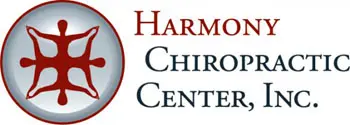My episode of Healthy Hints for Harmony where I talk about what Upper Crossed Syndrome is.
And here is another video that talks more about how you can start to treat yourself for Upper Crossed Syndrome.
Video Transcription – What is Upper Crossed Syndrome
Hello. My name is Dr. Bryan Royer and I’m here to give you some healthy hints for harmony. Today we’re gonna talk about the treatment of upper crossed syndrome.
Now, in order to treat upper crossed syndrome, you need to address the soft tissues and the muscles that are associated with it. Some of the muscles are tight and some of the muscles are weak. So what you need to do is have some myofascial release or myofascial work on some of them, on some of those muscles. And one of the things that we use is Graston Technique in order to help to release some of those tightness and those myofascial adhesions that are associated with that.
We also do exercises as well in order to strengthen the weakened muscles and stretch out the ones that are a little bit tight. One of the exercises that we use in order to treat upper crossed syndrome is Brugger’s exercise.
And Brugger’s has a couple different components to it, but what it is is basically the reverse of the posture that someone has in upper crossed syndrome. So again, the posture is someone that has rolled forward shoulders and their head is being forward. So, as opposed to being up here like this in a better posture, you’re down and your forward like this, and everything is rolled.
That might be exaggerated a little bit for some people, but that’s a general thing that you find in a lot of people overall. So the idea is, that you want to reverse that. So the first step is to take your shoulders and bring your shoulders back as far as you can, and then push them down. So it’s not just going back, it’s also going down like that. And you can see that from the side here. When I have my shoulders forward, you wanna pull them back and then you want to pull them down. Okay.
After you do that, the second part is, pretend like you’re holding two bowls of soup in your hand. So while your shoulders are back and down, you’re holding onto the soup. And then the idea is, that you’re gonna open yourself out like this to the side. And then pretend like you’re pouring out the soup behind you like that. Okay. So it’s that motion where you’re rotating back like this, when it comes to the hand, when you do at the end.
And then the last step that you do is you take your chin and you tuck your chin back. So it’s like, you’re doing one of these and you’re tucking your chin straight back. You’re not taking your head up or you’re not taking your head down. It’s a straight back. And when you do it, when you do it right, you actually notice that you’ll give yourself a little bit of a double chin. And that means that you are doing it right.
So basically what happens is that you put all of those together, where you take your shoulders back and down, you take your arms and open them out to the side like that. And then you take your chin and you tuck your chin back like that. It makes it a little hard to talk.
But you hold that posture in the morning and you do that for about 60 seconds total. You can break it up and you can do 30 seconds two times, or you can do 20 seconds, three times something along those lines. But do it in the morning for a total of 60 seconds, and then you do it at night for about 60 seconds. And then, overall, throughout the day, you can use that to take breaks during the day. Like if you’re working at a desk or computer and you go to get up or do something. Just go and do that stretch while you’re sitting if you want to sitting on the edge of the chair. You can go and do that stretch, and basically hold that for maybe 10, 15 seconds and then get up and do what you’re doing. And that basically is gonna help to correct the posture from here, back to here over time.
Thanks a lot for watching.
MORE INFORMATION ABOUT DR. ROYER
Dr. Bryan D. Royer has been practicing chiropractic medicine in the Toledo area since 2005. He graduated summa cum laude as the class salutatorian from the National University of Health Sciences (NUHS) in 2004. Dr. Royer’s earned a Bachelor of Science with a major in biology from the University of Dayton in 1999 and another Bachelor of Science with a major in human biology in 2002 from NUHS. He is the only Board Certified Chiropractic Neurologist practicing in the Toledo area and is also a Certified Chiropractic Sports Physician® (CCSP®). Dr. Royer is the only healthcare provider in the Toledo Area to be certified in Graston Technique® and he is also a Certified Kinesio Taping Practitioner™ (CKTP™). He is a member of the American Chiropractic Association, the Ohio State Chiropractic Association, the International Association of Functional Neurology and Rehabilitation, the ACA Council on Neurology and the Kinesio Taping Association.
